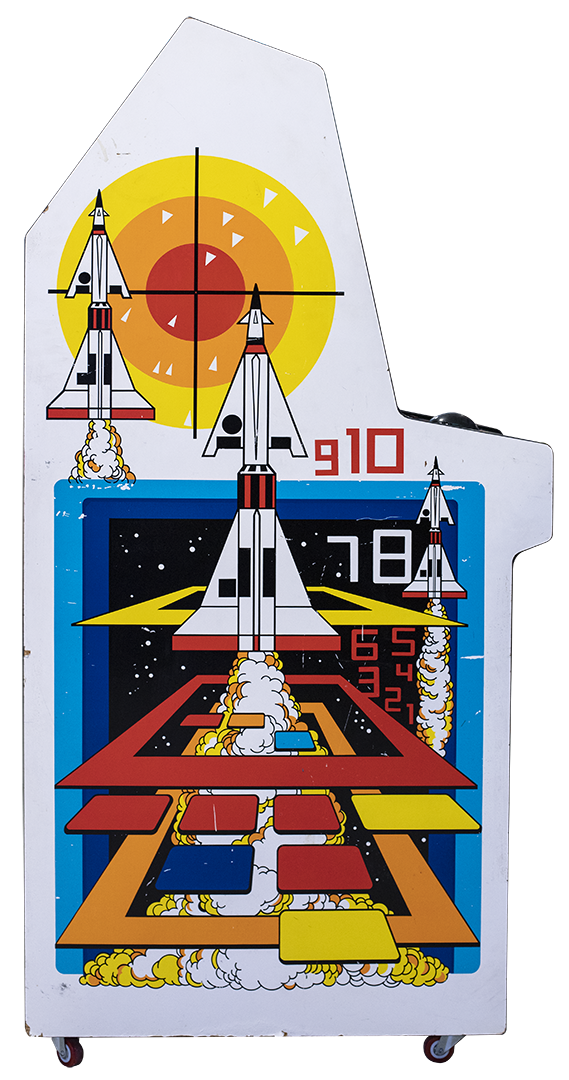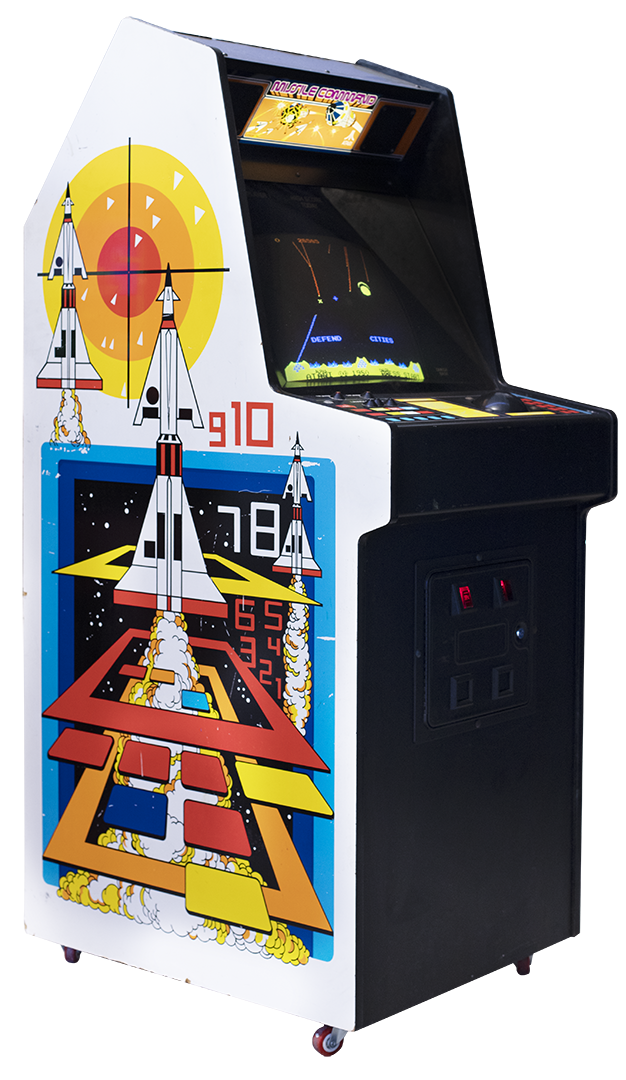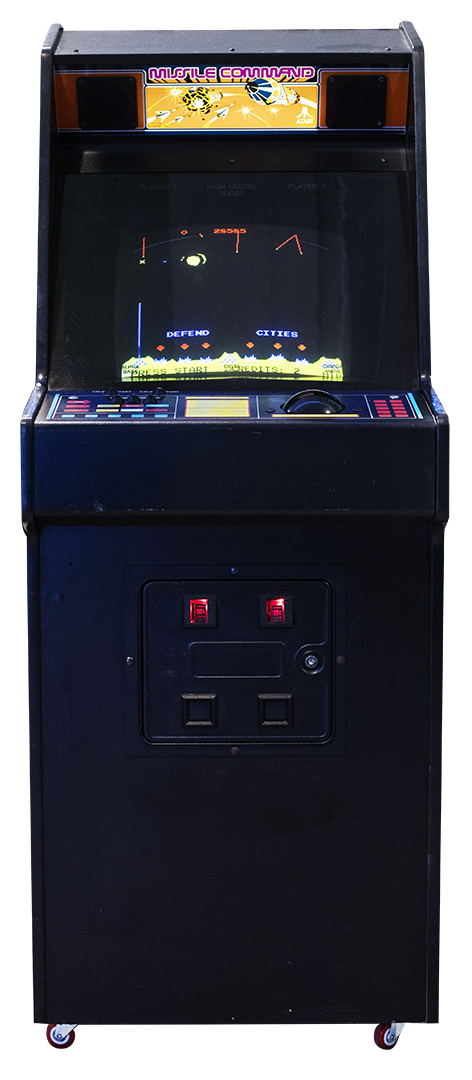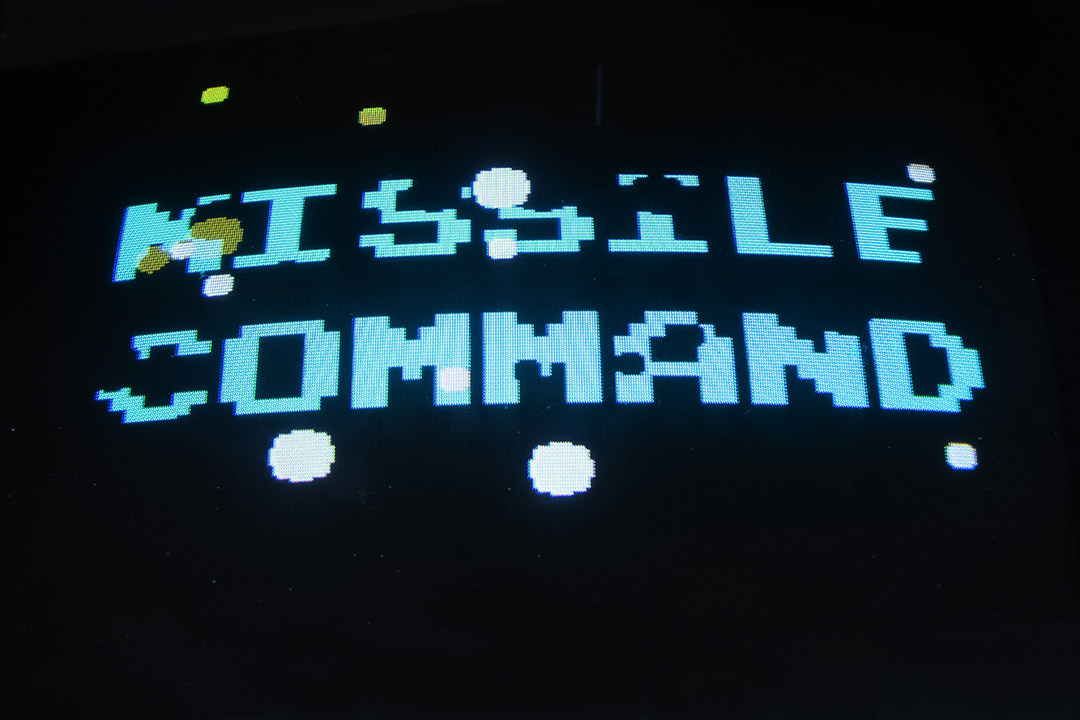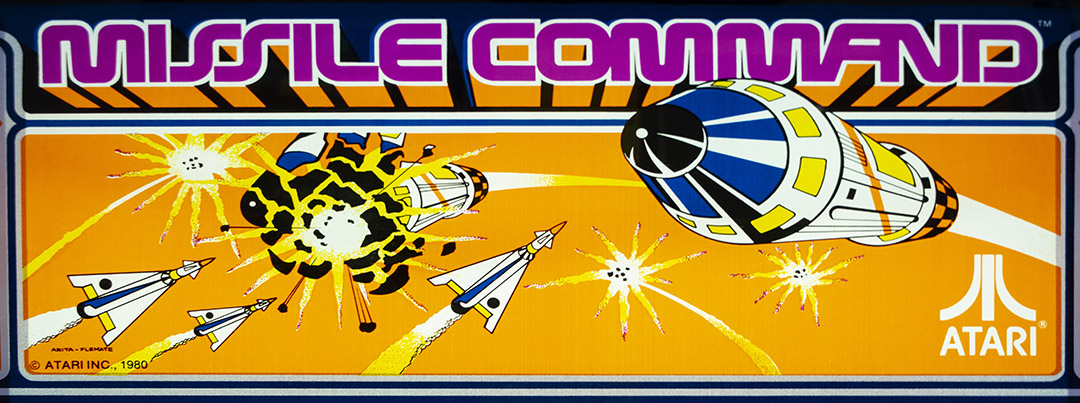
Missile Command
TECHNICAL DATASHEET
Game Name: Missile Command
Manufacturer: Atari
Year of development: 1980
Category: Shoot'em up
Hardware Platform Info:
- Main CPU processor 6502 at a frequency of 1 MHz
- Sound chip: Pokey
- Video Resolution 256x231 pixels
Main developer: Dave Theurer
GAME STORY
History of development:
Missile Command is a 1980 arcade game developed and published by Atari, Inc. and licensed to Sega for European release. It was designed by Dave Theurer, who also designed Atari's vector graphics game Tempest from the same year. The 1981 Atari 2600 port of Missile Command by Rob Fulop sold over 2.5 million copies.
Game Overview:
The plot of the game is simple. It is about defending, by means of three anti-missile batteries, six cities that appear on screen, which are being attacked by ballistic missiles, missiles launched from airplanes and satellites and also by smart bombs (they change trajectory dodging your defenses). As you progress through the levels, the difficulty also increases, so the missiles fall faster and more planes, satellites and smart bombs appear.
Enemy missiles attack all six cities as well as missile batteries. If an enemy missile strikes, it destroys a city or an anti-missile battery. Enemy weapons can only destroy three cities during one level. A level ends when all enemy weaponry is destroyed or reaches its target. If the player runs out of missiles, he no longer has control over the rest of the time in this level. At the end of a level, the player receives bonus points for each city saved or unused missiles. Between levels, anti-missile batteries are rebuilt and replenished, however, destroyed cities are rebuilt only after a certain number of levels have been passed.
Curiosities:
Originally, when the game was designed, the cities to be defended corresponded to six California cities: Eureka, San Francisco, San Luis Obispo, Santa Barbara, Los Angeles, and San Diego.
Missile Command is considered one of the best classic video games of the Arcade's golden age. The game is also interesting from the point of view of the influence that Cold War had on the world of cinema and video games, so present in the life of that time.
HISTORY OF THE MACHINE IN ARCADE VINTAGE
Status: OPERATIONAL
Information about the location and purchase by Arcade Vintage:
This was one of the most sought after machines by José Maria Litarte in recent years. Its acquisition became a reality at the end of 2017 in Madison, Alabama, covering 3,500 km in the United States until it reached port in New York. There were another 6,500 km from the USA to our Alpha Base, via the port of Valencia. It was then fine-tuned in Arcade Segovia, returning to Alpha Base and finally to the Association's headquarters in Petrer.
Information about the restoration process or repairs carried out:
Board restored by Ricardo Fernández-Vega and updated with a record-breaking board with a game called Missile Command 2.
At Alpha Base, Jorge Pelegrín and José Mª Litarte restored the trackball, installing a new one with new bearings.
